Logo Liability: How It Might Affect Your Truck Accident Lawsuit
In the domain of truck accident litigation, the doctrine of logo liability stands as a nuanced yet significant dimension, potentially altering the outcome of lawsuits. This legal concept scrutinizes the implications of a company's logo adorning a truck involved in an accident, suggesting a deeper level of operational control or ownership that could pivotally influence liability determinations. Given the complexities and high stakes involved, understanding the interplay between logo visibility and legal accountability is paramount for companies in mitigating risks and for plaintiffs in asserting their claims. The ensuing discussion aims to unpack the layers of logo liability and its impact on legal strategies, inviting further exploration into how this principle shapes the dynamics of truck accident lawsuits.
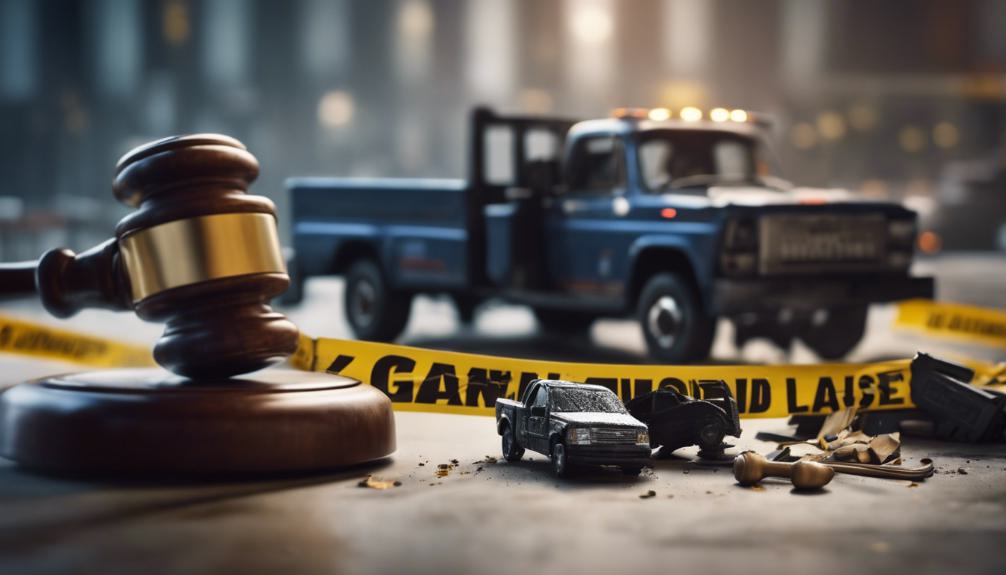
Key Takeaways
- Logos on trucks can imply a company's control and lead to liability in accidents.
- Legal evidence, including logos, is crucial in establishing a company's negligence.
- Contracts should clearly define logo use to mitigate liability risks.
- Understanding logo liability is essential for managing legal and financial risks in truck accidents.
Truck Accident Overview
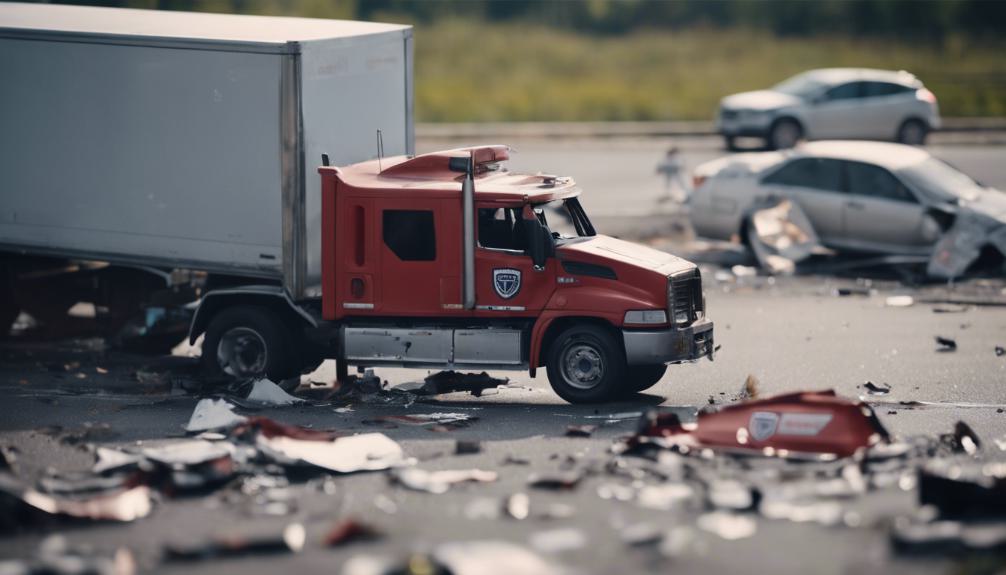
Exploring the intricate landscape of truck accidents reveals a critical need for strict safety measures and compliance, as these incidents often result in significant injuries and fatalities. In 2019 alone, over 4,000 deaths and 80,000 injuries were reported in accidents involving large trucks, underscoring the grave impact these vehicles can have on road safety. The sheer size and weight of trucks mean that when they are involved in collisions, the consequences are disproportionately severe compared to those involving smaller vehicles. This stark reality highlights the pressing need for thorough strategies to mitigate risks associated with trucking operations. It's not only about adhering to regulations but also about fostering a culture of safety that permeates every level of the trucking industry, from management to drivers.
Safety Compliance Importance
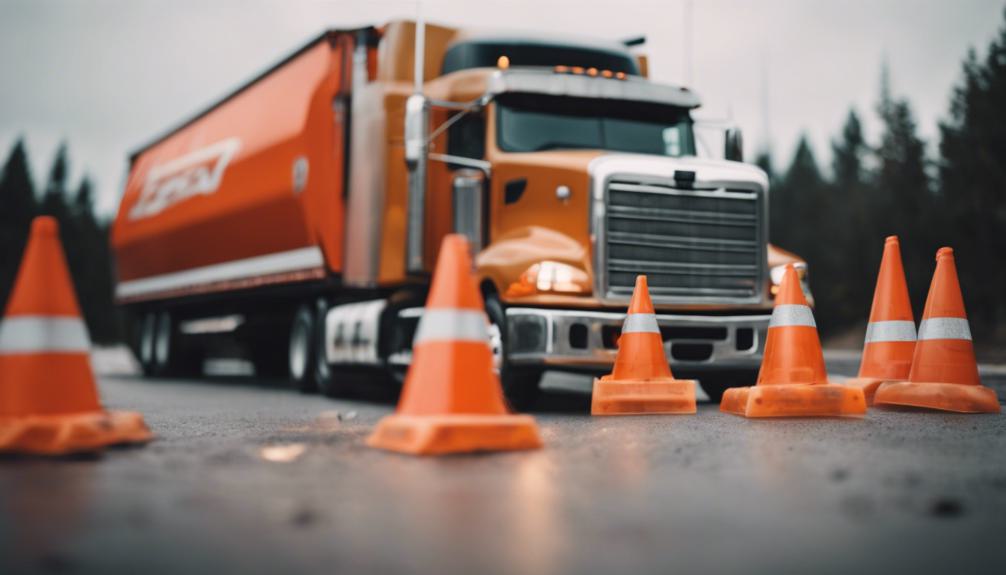
Understanding the importance of safety compliance is paramount for reducing the high incidence of accidents and fatalities involving large trucks. With over 4,000 deaths and 80,000 injuries in 2019 alone, the stark statistics underscore the critical need for trucking companies to rigorously enforce safety and risk compliance measures. These measures not only safeguard lives but also minimize the legal and financial risks associated with truck-related accidents. Prioritizing safety compliance involves rigorous training for drivers, regular maintenance checks on vehicles, and adherence to all regulatory standards. Implementing these practices demonstrates a company's commitment to safety, which can markedly mitigate risks and enhance the overall safety of roadways for all users.
Contracting Dynamics
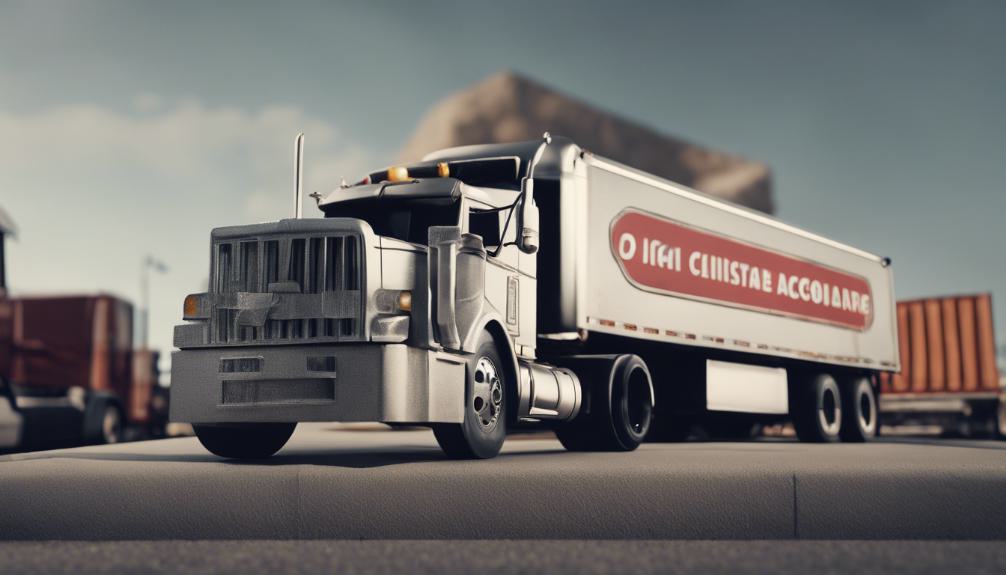
In the trucking industry, the relationship between companies and independent contractors, often referred to as owner-operators, is a complex one, requiring clear agreements to define responsibilities and liabilities. These agreements are essential as they delineate the extent of each party's involvement in operations and risk management. Companies must make sure that their contracts with contractors explicitly outline who is responsible for maintaining vehicle safety, adhering to federal and state regulations, and handling liabilities in the event of an accident. This contractual clarity is not merely bureaucratic; it is a critical component of risk management and legal protection for both parties. Misunderstandings or vague terms can lead to disputes or increased liability, particularly when accidents occur. Therefore, meticulously drafted contracts serve as a foundational element of the industry's contracting dynamics, safeguarding all involved parties.
Logo Liability Explained
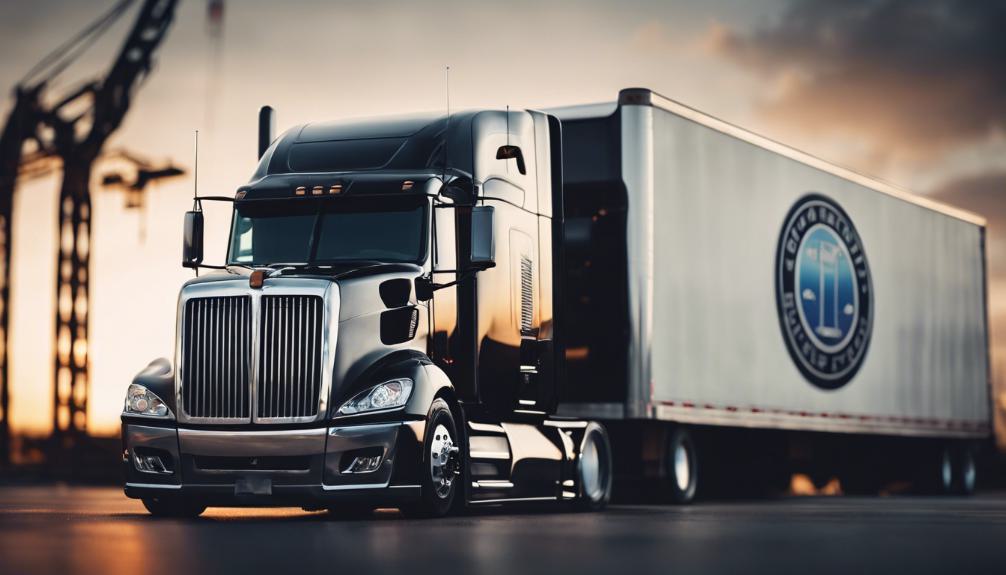
Building on the complexities of contracting dynamics within the trucking industry, logo liability emerges as a significant legal concept that businesses must navigate carefully to mitigate risk and guarantee compliance. This principle holds companies accountable for accidents involving trucks that bear their logos, even if the drivers are independent contractors or owner-operators. The underlying rationale is that the public associates the logo with the company, implying a degree of control or oversight over the vehicle and its operations. Consequently, if a truck involved in an accident displays a company's logo, that company can be deemed responsible for damages. This necessitates stringent measures in logo use and a clear understanding of the implications of logo liability in maintaining a company's reputation and financial stability.
Lawsuit Evidence Role
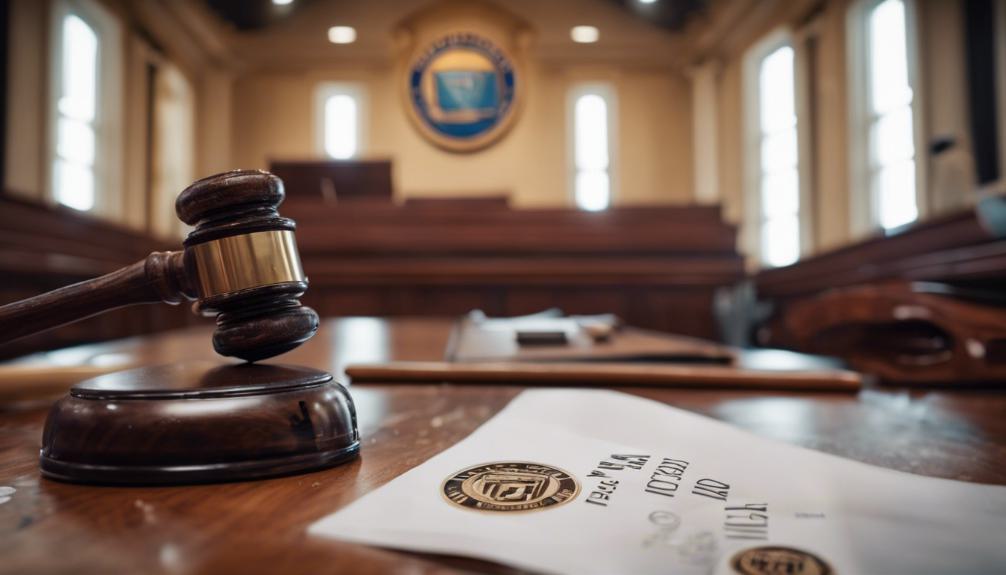
The role of lawsuit evidence in contexts involving logo liability cannot be overstated, as it often determines the outcome of truck accident litigation. When a truck adorned with a company's logo is involved in an accident, the presence of the logo itself becomes a pivotal piece of evidence. It potentially signifies the company's control over the vehicle and, by extension, the driver's actions. This association can influence the direction of legal responsibilities and liabilities. Careful examination of contracts, driver logs, and safety compliance records alongside the logo's visibility offers insight into the operational relationship between the trucking company and the driver. This evidence collectively aids in establishing the extent of a company's oversight and potential negligence, thereby shaping the legal arguments and strategies in truck accident lawsuits.
Insurance and Logo Liability
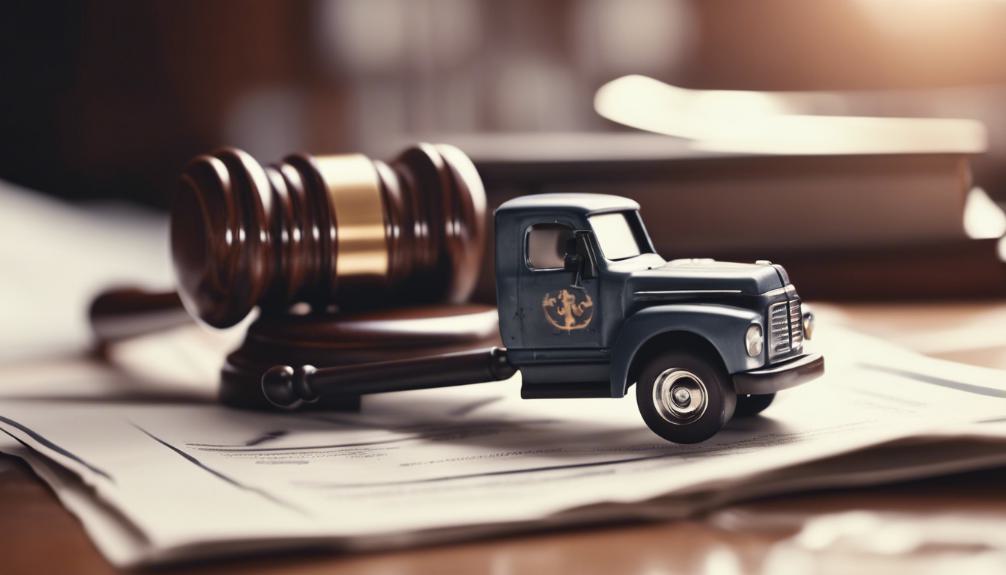
Understanding the role of lawsuit evidence in logo liability sets the stage for exploring how insurance considerations play a pivotal part in mitigating risks associated with logo usage on trucks. Insurers meticulously evaluate the presence of a company logo on trucks as an indicator of potential liability. This scrutiny arises because a logo can imply a company's guarantee over the truck and its operations, thereby influencing the company's legal and financial responsibilities in the event of an accident. Consequently, it is crucial for companies to guarantee their insurance policies adequately cover scenarios where logo liability could come into play. This necessitates a thorough assessment and possibly adjustments in insurance coverage to safeguard against the financial repercussions of truck accidents tied to logo liability.
Avoiding Legal Issues
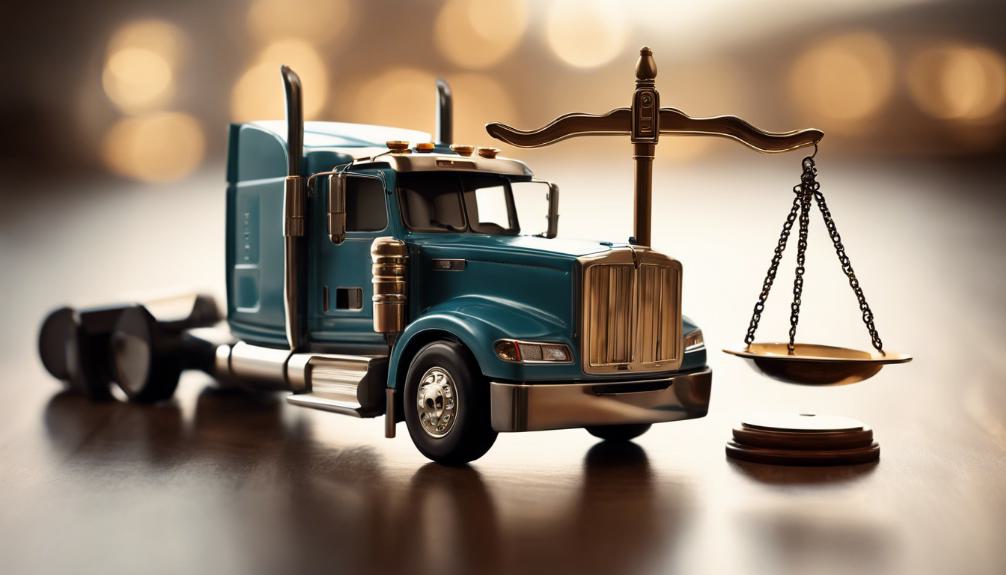
To effectively circumvent legal challenges associated with logo liability, companies must rigorously implement and adhere to thorough risk management strategies. This encompasses conducting regular audits of safety and compliance measures, particularly focusing on trucking operations and the use of logos in advertising and on vehicles. Ensuring that contracts with independent contractors or owner-operators clearly define responsibilities, liabilities, and adherence to safety standards is imperative. Additionally, continuous education and training for drivers on safety protocols can mitigate risks. Companies should also be vigilant in maintaining the integrity of their logos, ensuring that their use does not imply control over drivers in a manner that could increase legal exposure in the event of an accident.
Insurance Protection Strategies
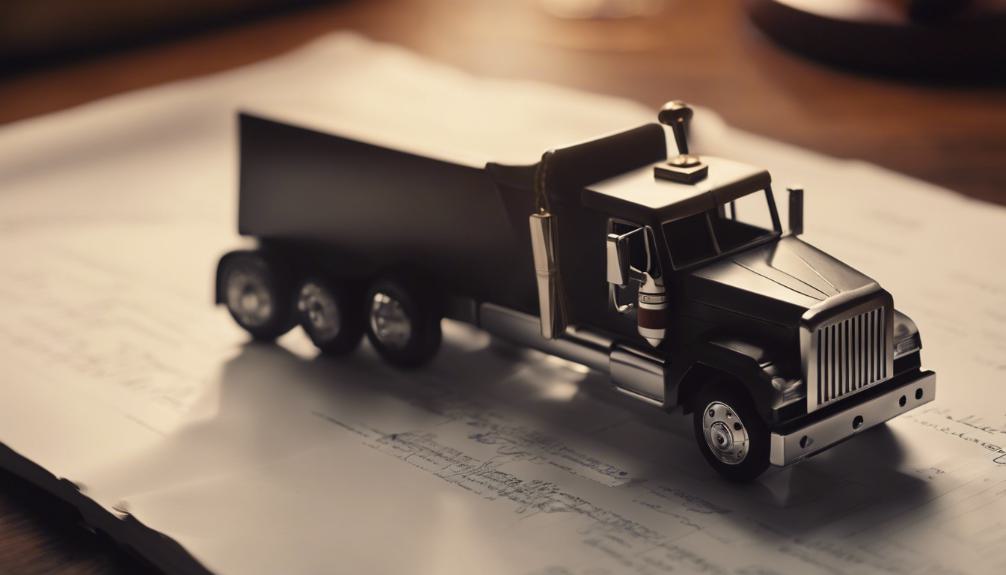
Exploring the complexities of logo liability, companies must also focus on securing extensive insurance coverage as a safeguard against potential legal repercussions. Given the significant implications of logo liability in truck accident lawsuits, it's important for businesses to adopt insurance protection strategies that adequately cover the risks associated with their operations and the use of their logos on vehicles. This entails not only procuring thorough general liability insurance but also considering additional policies such as commercial auto liability, umbrella coverage, and excess liability policies. These insurance products can offer a broader safety net, ensuring that companies are better prepared to handle the financial and reputational fallout of a lawsuit. Working closely with insurance providers to understand coverage limits and exclusions is vital in fortifying a company's defense against potential claims arising from logo liability.
Future Implications
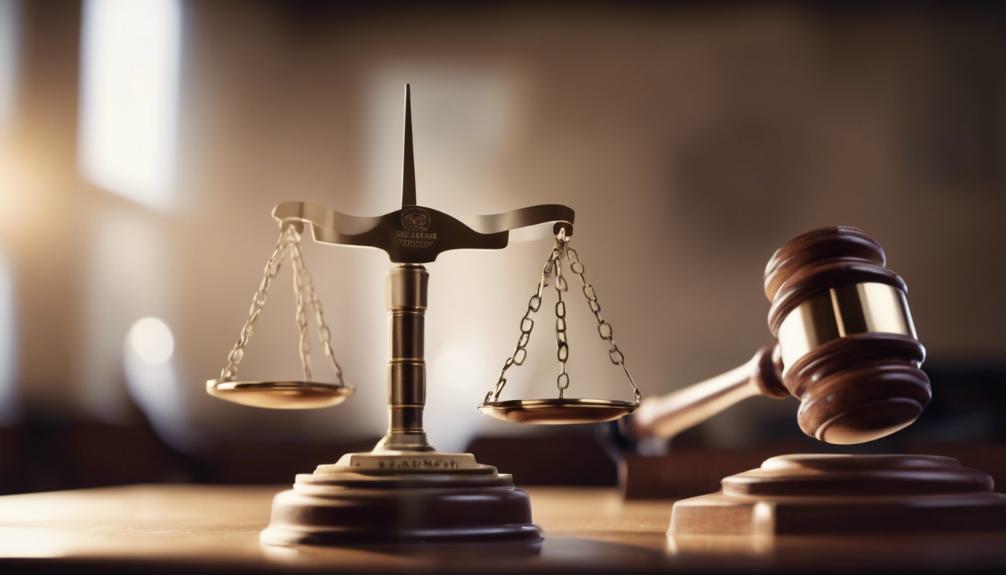
As the trucking industry continues to evolve, the implications of logo liability for future legal landscapes and company operations become increasingly significant. The rising reliance on technology and autonomous vehicles will likely introduce new dimensions to logo liability, necessitating nuanced legal frameworks and operational strategies. For companies, this means a proactive approach to safety and compliance will be more critical than ever. They must not only guarantee that their logos are used in a manner that minimizes legal risks but also stay ahead of the evolving regulatory environment to protect their interests. Future litigation could see more complex arguments around the extent of a company's control and responsibility, making it imperative for businesses to adopt thorough risk management and insurance strategies that address these emerging challenges.
Frequently Asked Questions
How Does Logo Liability Impact the Personal Liability of the Truck Driver Involved in an Accident?**
Logo liability's impact on a truck driver's personal liability depends on the driver's employment status and operational control indicated by the logo presence. It often shifts legal responsibility towards the company owning the logo.
This Question Seeks to Understand the Relationship Between a Company's Logo Liability and the Individual Responsibility of the Truck Driver, Which Might Not Be Directly Covered in Sections Discussing the Broader Legal and Insurance Implications for Companies.
Exploring the intricate dance of accountability in truck accidents, the question probes the interplay between a company's logo liability and a truck driver's personal responsibility, highlighting the nuanced legal landscape absent specific logo liability considerations.
Are There Any Notable Differences in How Logo Liability Is Treated in Different States or Countries?**
Logo liability's treatment varies across jurisdictions, reflecting differing legal frameworks and interpretations of corporate responsibility in truck accidents. Research into specific state or country laws is essential for understanding these nuances.
This Question Delves Into the Jurisdictional Variations in Handling Logo Liability, an Aspect That Might Not Be Explicitly Addressed in the General Discussion of Logo Liability and Its Implications on Truck Accident Lawsuits.
Jurisdictional variations greatly impact the handling of logo liability. For instance, in a hypothetical scenario, a state might prioritize the visual presence of a logo as indicative of operational control, influencing liability in truck accident lawsuits.
How Does Logo Liability Affect Relationships and Contracts Between Primary Trucking Companies and Subcontractors or Owner-Operators?**
Logo liability impacts the contractual relationships between primary trucking companies and subcontractors or owner-operators by dictating the extent of liability and operational control, thereby influencing the allocation of responsibilities and legal obligations within these partnerships.
Conclusion
Replacing "navigating" with "maneuvering", "realm" with "domain", and "in conclusion" with "to sum up":
To sum up, the concept of logo liability plays a significant and complex role in the domain of trucking accidents, intertwining with aspects of safety compliance, contracting dynamics, and insurance considerations. While some may argue that this places an undue burden on companies to police every aspect of their contracted drivers' operations, it ultimately incentivizes the adoption of rigorous safety protocols and accountability measures. By understanding and maneuvering the intricacies of logo liability, entities can better protect themselves against legal repercussions and contribute to safer roadways for all.

This post has been generated by AI and was not reviewed by editors. This is Not legal advice. Please consult with an attorney.




